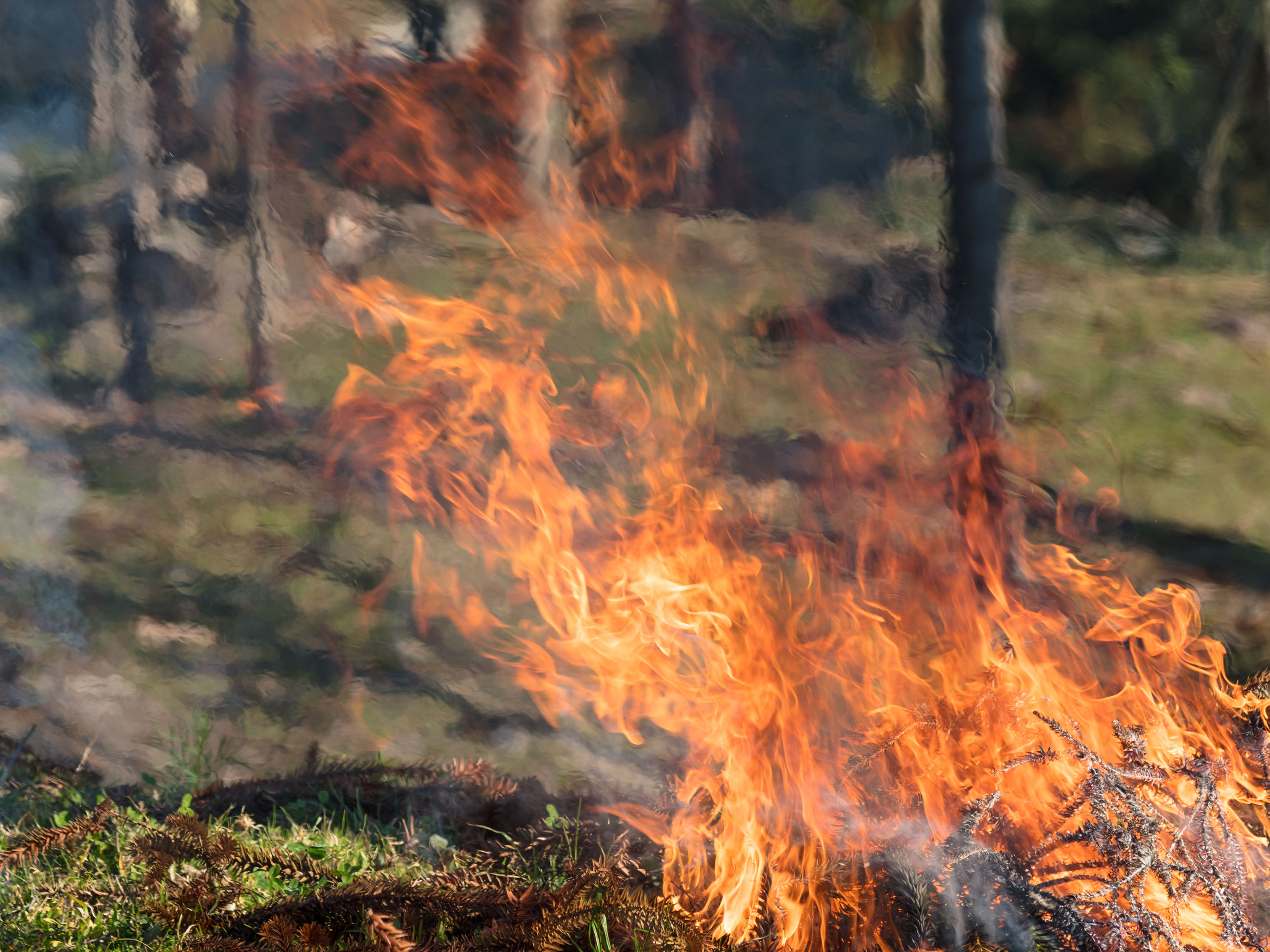
Fire conditions and burn bans
Learn about current fire conditions, burn bans, and how to keep our forests and neighbors safe from risk
Determining danger levels
Fire danger is the probability of a fire to start as well as the rate of spread and intensity of its burn. Awareness of fire danger levels helps decrease wildfire ignitions.
State and local authorities determine when risk is high enough to instate burn bans prohibiting open fires. Review state open burning rules , and know that your local (city/parish) ones may be stricter, so consult your local government before open burning.
Even when there aren’t burn bans, we recommend checking fire conditions and practicing safe burning practices.
Local information
When fire risk increases, Louisiana’s state and local governments restrict open burning with burn bans.
“Open burning” is burning material outside on open ground without a container for the flame. Open burning rules regulate:
What kind of materials you can and can’t burn outside on an open fire
Where those burns may and may not occur
When it's safe or unsafe to do open burns
Burn bans temporarily prohibit open burns in an area until fire risk decreases.
Review state open burning rules, and know that your local ones may be stricter, so consult your local government before open burning.
Where open burning is allowed in local ordinances, the State Fire Marshal would like to remind residents that the only legal items you can burn in Louisiana are vegetation and ordinary yard waste items like leaves, tree branches, grass clippings, etc.
According to the Louisiana Department of Environmental Quality , items NOT allowed to be burned include:
Plastic and other synthetic materials
Tires and other rubber products
Paints, household, and agricultural chemicals
Asphalt shingles, heavy oils, wire
Newspaper, cardboard, and other paper products
Buildings and mobile homes
What qualifies as agricultural burning as it relates to LDAF ag burn bans?
Agricultural burning is not burning piles of debris on land; it is not clearing land for development. Agricultural burning is burning for the purposes of reducing crop residue, stimulating yield, controlling diseases and pests, or generally maintaining the productivity of agricultural lands, such as the burning of residue after harvesting rice and sugarcane.
Contact info
Fire danger is the probability of a fire to start as well as the likely rate of spread and intensity of its burn. Awareness of the fire danger levels helps decrease wildfire ignitions.
Contact info
Related links

